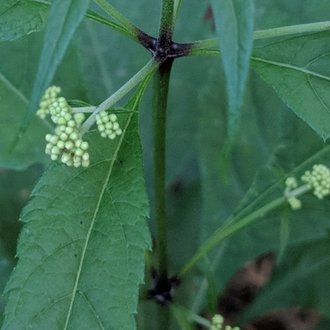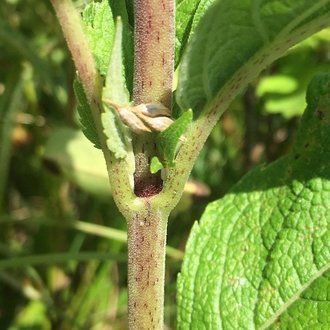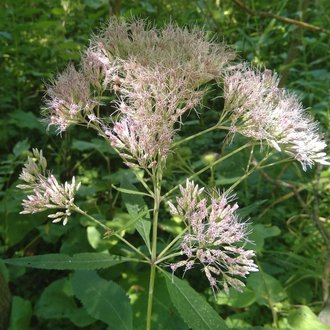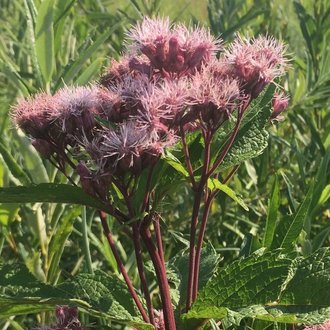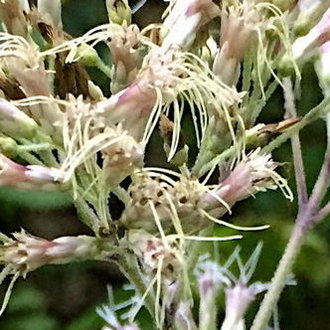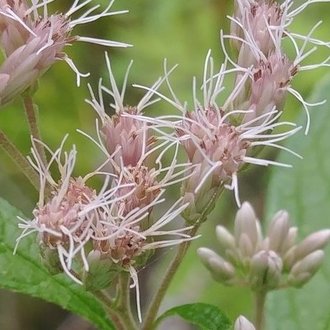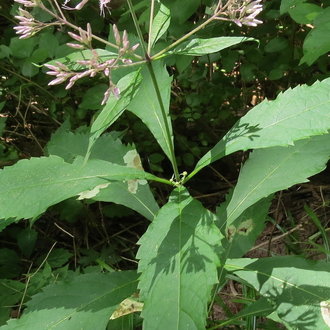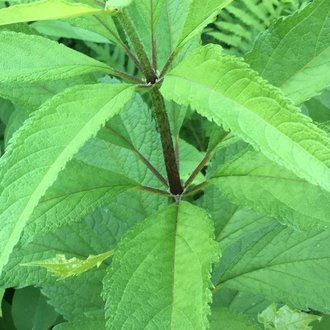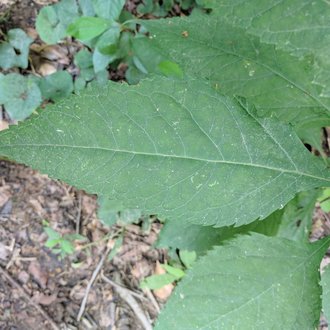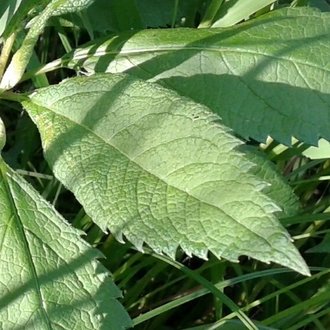Sweetscented Joe Pye Weed vs Spotted Joe Pye Weed
These two species are occasionally confused where their ranges overlap in the northeast and Midwest. They are usually easily distinguished by their stems, inflorescence shape, and number of florets per head. They also have average differences in bloom color, leaf texture, and number of leaves per whorl, but these characteristics have more variability and overlap. E. purpureum prefers drier, shadier habitats, whereas E. maculatum is usually found in sunnier wetlands. The two species can hybridize, so it may not be possible to identify all individuals.
Sweetscented Joe Pye Weed (Eutrochium purpureum) | Spotted Joe Pye Weed (Eutrochium maculatum) |
A tall perennial of partly-shaded areas, preferring drier and shadier conditions than other Eutrochium species. | A perennial of sunny, calcium-rich wetlands, ranging the farthest north of its genus. |
Stems are solid green, but dramatically purple at nodes, with purple usually extending onto petioles or branches of the inflorescence. Photo © Mirko Schoenitz, Public Domain. | Stems are spotted. If there is any darker purple color near nodes, it is usually subtle and does not extend as far. Photo © D.Perleberg, CC BY 4.0. |
Inflorescence convex. Color variable but more likely to be pale pinkish, closer to white. Photo © Marilynn Miller, CC BY 4.0. | Inflorescence usually more flat-topped. Color variable but more likely to be mauve or grayish purple. Photo © Sean, CC BY 4.0. |
Usually has 4-8 florets per head. Photo © Katja Schulz, CC BY 4.0. | Usually has 9-22 florets per head. Photo © Laura Costello, CC BY 4.0. |
Leaves usually in whorls of 3-4, occasionally 5. Photo © megachile, Public Domain. | Leaves usually in whorls of 4-5, occasionally 3 or 6. Photo © Kathleen Houlahan Chayer, Public Domain. |
Leaves flatter and less textured, veins not as depressed. Photo © Mirko Schoenitz, Public Domain. | Leaves look more textured, with more visibly-depressed veins. Photo © Quinten Wiegersma, CC BY 4.0. |
References & External Resources
These short lists show only links helpful for ID. For a complete list of references and resources also covering other aspects of ecology, visit the links section of the full article on each plant, which is the first entry here.



